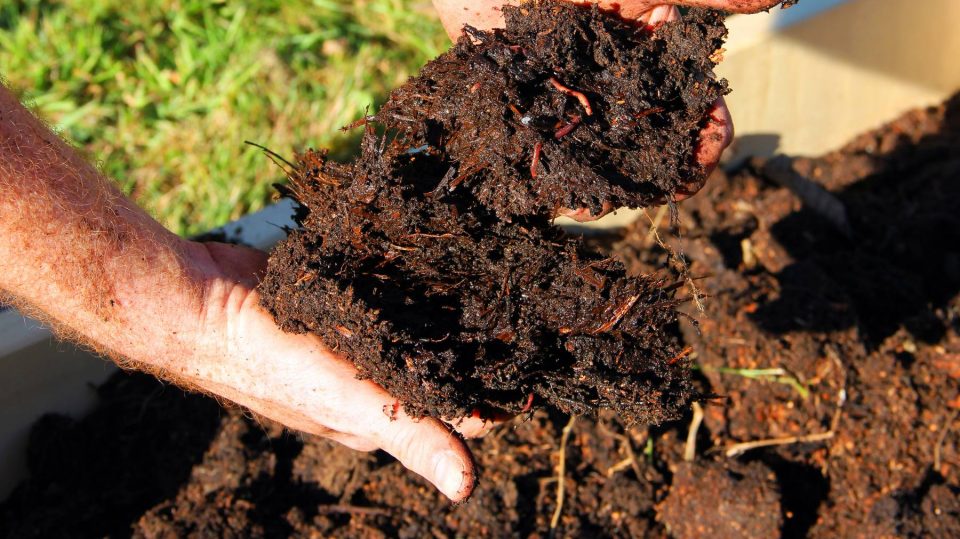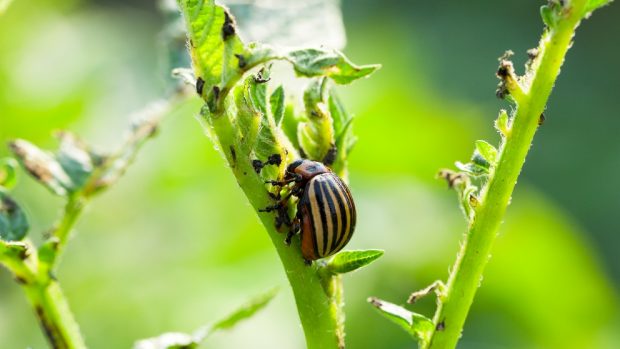agriculture
One of the latest agricultural discoveries is the benefits of worms to protect crops without pesticides.

Researchers in University of California, Riverside (UCR)United States, made an important discovery by Identify a small type of nematode that is capable of infecting and killing insects. This is a discovery that would be an effective solution to combat pests in areas with hot and humid conditions, especially in agricultural crops.
This new species belongs to the family of nematodes known as steinernma, which has been widely used in agriculture as a pesticide-free alternative to control insect parasites. Nematodes of the genus Steinernema are Harmless to humans and other mammalsIts use in agriculture dates back to its discovery in the 1920s.
“We spray billions of them on crops every year and they are easy to get,” he commented. Adler Dillman, professor of nematology at UCLA, whose laboratory led this discovery. “Although there are more than 100 species of Steinernema, we are constantly looking for new varieties because each species has unique characteristics. “Some may be better adapted to certain climates or be more effective against certain types of insects.”
Discover an opportunity
With the intention of deepening knowledge of different types of Steinernema, Dillman's lab requested samples from colleagues in Thailand. “We performed DNA analysis on the samples and realized they did not match the ones we had requested. Genetically, they were different from any other species. Dillman explained.
Dillman and his team documented this new species in Journal of Parasitology. naked eye, They are practically invisibleIt is about half the width of a human hair and less than 1 millimeter long. “Several thousand in the vial looks like powdered water,” Dillman added.
They named the new species “Steinernema adamsi” in honor of the American biologist Byron Adamswho serves as chair of the biology department at Brigham Young University.
“Adams has contributed greatly to improving our understanding of nematode species and their critical role in soil ecology and nutrient recycling. Additionally, he was my undergraduate advisor and the person who introduced me to the world of nematodes. This seems like a fitting tribute to him,” Dillman explained.
Adams, who is currently researching nematodes in Antarctica, feels proud that such a “remarkable” species bears his name in the scientific literature. Moreover, highlight that “The biology of this organism is absolutely fascinating.”
“In addition to its obvious applications To alleviate human suffering caused by insect pests“It also contains valuable lessons about the ecological and evolutionary processes involved in the complex interactions between parasites, pathogens, their hosts and environmental microbes,” he said.
Kill insects
Like pesticides, one thing is clear: Steinernema Adamsi kills insects. The researchers confirmed this by placing some of these nematodes in containers containing mites. “They were killed in two days with a very low dose of anthelmintic,” Dillman recalls. Since they are members of a genus that can infect hundreds of insects, the researchers are confident that this will be “very beneficial,” whether it is possible or not. A specialist or generalist parasite.
In the future, researchers hope to discover the unique characteristics of these nematodes. “Still We don't know if it can resist heat, UV rays or dryness. This also does not affect the diversity of insects capable of infecting them, Dillman explained. The discovery of this new species has important implications for living organisms Development of effective biological control agents in Thailand and in areas with similar climatic conditions.
“It's exciting because of the discovery He adds another “insecticide” that could teach us interesting new biology. “They also come from a warm, humid climate, which may make them a good insect parasitoid in environments where currently commercially available horticultural nematodes are unable to thrive,” Dillman concluded.
Other crop protection measures without pesticides
There are many Measures that can be taken to protect crops Without the need to use chemical pesticides. Here are some options:
- Crop rotation: Change crops Every season can help prevent the buildup of pests and diseases in the soil.
- Cover crops: Vegetation crops Such as legumes or grasses can help protect and improve soil health, which in turn reduces the need for pesticides.
- Use of beneficial insects: Introduction of beneficial insects Such as beetles, parasitic wasps, or beneficial nematodes in the crop can help control pests naturally.
- Use of traps: Setting traps to catch insects and other harmful organisms can be an effective way to control pests without resorting to pesticides.
- Planting repellent plants: Plant aromatic herbs or repellent plants Planting basil, mint or garlic around the crop can help keep pests away.
These are just some of the measures that can be taken to protect crops without using chemical pesticides. It is important to remember that sustainable and environmentally friendly agriculture is possible if appropriate practices are implemented and biodiversity in crops is enhanced.
Recommended readings

“Beeraholic. Friend of animals everywhere. Evil web scholar. Zombie maven.”

:quality(85)/cloudfront-us-east-1.images.arcpublishing.com/infobae/AL6JURSLDRFCBZDTHQZECTZVDM.jpg)
:quality(85)/cloudfront-us-east-1.images.arcpublishing.com/infobae/GXZYEJ3EHZCJRLVACL3MM753OI.jpg)
:quality(85)/cloudfront-us-east-1.images.arcpublishing.com/infobae/P4FWF242JFA4BDV33F5JKOUUX4.jpg)





More Stories
Scientists revive old cell phone batteries using a chemical method
Daniel Gomez Rinaldi recounted his moment of poor health: “It was the strongest pain I have ever felt in my life.”
What are quantum computers and why are they the most expensive technology in the world?